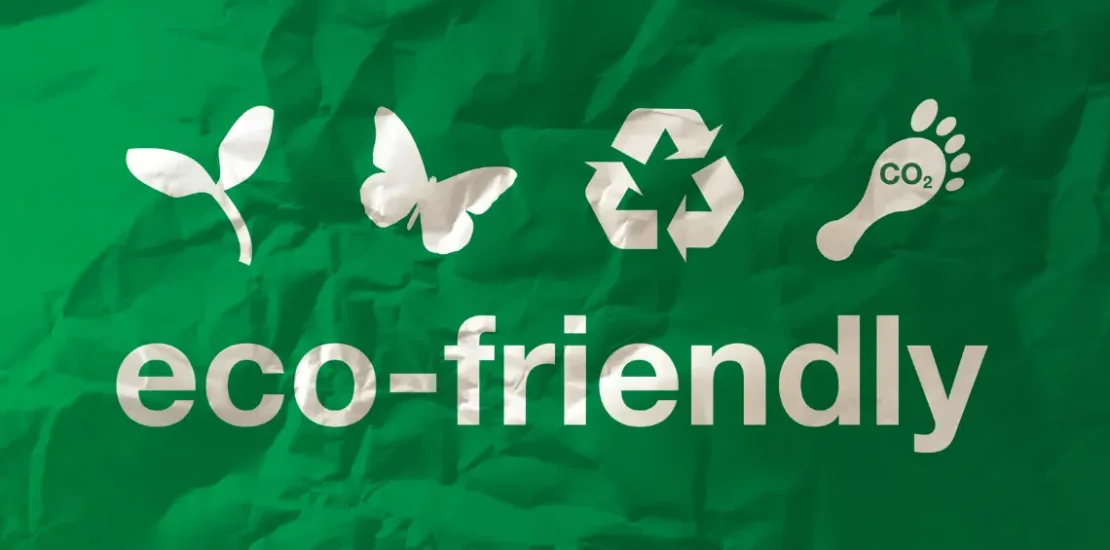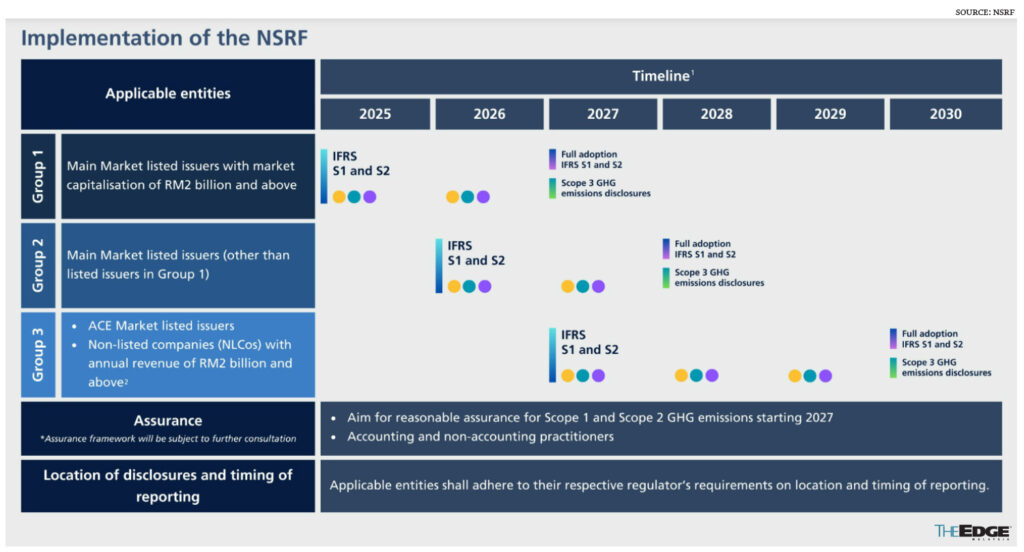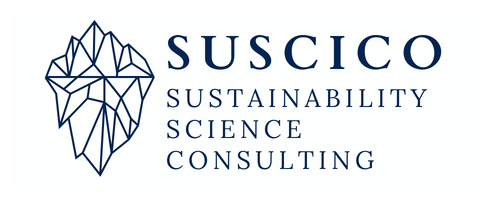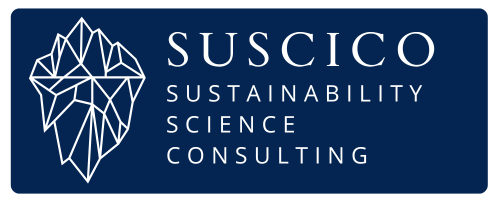Ecolabelling Certification – The SIRIM Eco-Label Scheme
- 24/04/2025
- Posted by: Ildar Usmanov
- Categories: ESG Certification, ESG Rating, Trends

Introduction: Eco Label
Businesses today face growing pressure to prove that their products are not only safe and high-quality but also environmentally responsible. Around the world, ecolabelling has become one of the most trusted ways to communicate this. Ecolabelling is a voluntary certification system based on international standards such as ISO 14024 (Type I environmental labels). It provides independent, third-party assurance that a product meets strict environmental criteria across its life cycle.
In Malaysia, the SIRIM Eco Label is the national ecolabelling scheme. Operated by SIRIM QAS International, the programme is accredited under ISO/IEC 17065 and recognised internationally through the Global Ecolabelling Network. This ensures that the certification is credible, transparent, and globally comparable.
The importance of the SIRIM Eco Label is growing. For manufacturers, it opens doors to green procurement programmes such as the government-backed MyHIJAU Mark. For exporters, it supports compliance with international buyers who increasingly demand proof of sustainability. And for companies pursuing ESG goals, it provides a structured and verifiable way to show real environmental performance improvements.
Against this backdrop, understanding how the SIRIM Eco Label works—and what it takes to achieve certification—has become critical for Malaysian manufacturers and brand owners.
What is Eco Labelling?
The SIRIM Eco Label is Malaysia’s official Type I ecolabel, developed in line with ISO 14024 principles. It provides independent third-party verification that a product meets both technical and environmental standards. A licence holder is authorised to display the eco label on the product, its packaging, and promotional materials.
Unlike marketing claims or self-declared labels, the SIRIM Eco Label is based on rigorous testing, audits, and compliance with recognised product standards. This makes it a credible tool for manufacturers to differentiate their products in an increasingly sustainability-driven market.
Operated by SIRIM QAS International
The scheme is managed by SIRIM QAS International Sdn. Bhd., Malaysia’s leading conformity assessment body. SIRIM QAS is accredited to ISO/IEC 17065 for product certification and is a member of the Global Ecolabelling Network (GEN). This ensures that the SIRIM Eco Label aligns with international best practice and is recognised globally.
Recognition and Market Linkages
The label is not just a mark of environmental performance. It also connects directly to the MyHIJAU Mark, Malaysia’s green recognition platform. Products with the SIRIM Eco Label are eligible for listing in the MyHIJAU Directory, which is the official reference for Green Public Procurement (GPP). This gives certified products a competitive edge in both government tenders and corporate procurement.
In short, the SIRIM Eco Label provides more than a logo—it is an assurance of compliance, a passport to green markets, and a foundation for long-term ESG credibility.
Certification Principles & Foundations of the SIRIM Eco Label
The SIRIM Eco Label operates on clear certification principles that ensure credibility and trust. It is not enough for a product to look sustainable—it must prove compliance on three fundamental levels.
The Three Mandatory Prerequisites
- Compliance with Product Standards
Every product must comply with its relevant technical standard. This can be a Malaysian Standard (MS), an international standard such as ISO or EN, or a recognised SIRIM Eco-Label Criteria document. - Compliance with Eco-Labelling Criteria
Beyond safety and performance, the product must meet specific environmental criteria. These cover aspects such as recycled content, energy efficiency, hazardous-substance limits, waste reduction, and product recyclability. - Compliance with Environmental Law
Manufacturers must comply with Malaysia’s Environmental Quality Act and all relevant statutory approvals, such as permits from the Department of Environment (DOE), DOSH, or BOMBA.
Ongoing Quality Control
Holding a SIRIM Eco Label licence is not a one-off achievement. Manufacturers must maintain a documented quality control system, covering testing, inspection, traceability, and handling of non-conforming products. SIRIM verifies this through factory audits and surveillance inspections to ensure continuous compliance.

Eco-Labelling Criteria under the SIRIM Ecolabelling Scheme
The strength of the SIRIM Eco Label lies in its category-specific criteria. These requirements go beyond quality and safety, focusing instead on measurable environmental performance. A product is only certified once it proves compliance with both the technical standards and the eco-criteria.
Resource Efficiency and Recycled Content
Products must demonstrate efficient use of materials. This often includes minimum thresholds for recycled content, reduced use of virgin resources, or design that supports lightweighting. For metals like aluminium, this may mean verifying a high proportion of recycled input in the finished product.
Energy and Water Efficiency
The certification looks at energy and water use during production. Manufacturers are expected to adopt efficient processes, reduce overall consumption, and show improvements compared to industry baselines.
Hazardous Substances and Emissions
Eco-labelled products must limit or eliminate substances harmful to human health and the environment. This can include restrictions on heavy metals, VOCs, and other toxic compounds. Facilities are also assessed on their ability to manage and reduce air emissions and effluent discharges.
Waste Management and Circularity
The SIRIM Eco Label requires manufacturers to handle waste responsibly. This means proper segregation, treatment, and, where possible, recycling or reuse of by-products. Packaging is also evaluated for recyclability and minimal environmental impact.
Durability and Performance
Environmental gains must not compromise performance. Certified products need to meet or exceed the durability and technical standards of conventional alternatives. This ensures buyers can trust both the quality and the eco-performance.
Compliance with Environmental Law
Finally, certification is tied to legal compliance. Manufacturers must hold valid approvals under the Environmental Quality Act and any other regulatory requirements relevant to their industry.
The SIRIM Eco Label Certification Process
The certification process is designed to be systematic and transparent. Every applicant goes through a structured pathway, from enquiry to licence renewal. This ensures that the SIRIM Eco Label remains credible and internationally recognised.
Step 1: Enquiry and Quotation
The journey begins when a company submits a product questionnaire. SIRIM reviews the information and issues a quotation for certification. This step helps applicants understand the scope, requirements, and costs before proceeding.
Step 2: Application Submission
Once the quotation is accepted, the applicant must prepare a full dossier. This includes the official application form, declarations of regulatory approvals, trademark or brand name documents, and details about the manufacturer. Technical specifications, drawings, and available test reports are also required.
Step 3: Documentation Audit
SIRIM conducts a detailed audit of the submitted documents. At this stage, the product is checked against its relevant Malaysian or international standard, as well as the eco-labelling criteria. If gaps are found, the applicant is asked to close them before moving forward.
Step 4: Factory Audit and Sampling
Next, SIRIM auditors visit the production site. They examine the manufacturer’s quality control system, review environmental management practices, and take product samples. These samples are then tested in accredited laboratories to verify compliance with both technical and environmental criteria.
Step 5: Certification Decision
When all evidence is in place, SIRIM prepares a certification report. A panel reviews the findings and makes the final decision. Only when the panel is satisfied does the product qualify for the SIRIM Eco Label licence.
Step 6: Licence Issuance
Approved applicants receive a licence to use the SIRIM Eco Label on their products, packaging, and promotional materials. This mark confirms to buyers and regulators that the product has met strict eco-labelling requirements.
Step 7: Surveillance and Renewal
Certification is not permanent. SIRIM conducts surveillance audits, usually every two years, to confirm ongoing compliance. Manufacturers must maintain their quality system, keep records, and ensure that products continue to meet eco-label standards.
Benefits of the Eco Label Certificate
The SIRIM Eco Label is more than a symbol on packaging. It delivers real value to manufacturers, retailers, and end-users. By securing this certification, companies can unlock multiple business, regulatory, and reputational advantages.
Independent Environmental Assurance: The label is backed by third-party audits, product testing, and continuous surveillance. This provides strong assurance that environmental claims are genuine. It also protects companies from accusations of greenwashing and builds consumer trust.
Market Differentiation: With sustainability becoming a key purchasing factor, the SIRIM Eco Label gives certified products a clear advantage. It helps brands stand out in competitive markets by demonstrating verified environmental performance.
Access to Green Procurement: Products certified with the SIRIM Eco Label are eligible for recognition under the MyHIJAU Mark. This opens opportunities in Malaysia’s Green Public Procurement (GPP) and makes products more attractive to buyers committed to ESG policies.
International Recognition: Because SIRIM is a member of the Global Ecolabelling Network (GEN), the label enjoys international credibility. This enhances export competitiveness and strengthens the reputation of Malaysian manufacturers in overseas markets.
Stronger ESG and Brand Image: Certification directly supports corporate ESG strategies and sustainability reporting. Displaying the SIRIM Eco Label communicates responsibility to customers, investors, and regulators. It positions the company as forward-looking and environmentally responsible.
Efficiency and Continuous Improvement: To maintain the licence, companies must operate robust quality and environmental systems. This improves internal efficiency, reduces waste, and drives ongoing compliance with environmental laws.
Challenges in Obtaining the SIRIM Eco Label
While the SIRIM Eco Label offers clear benefits, certification is not without challenges. Manufacturers must be prepared to address both technical and organisational hurdles before approval.
Compliance with Product Standards – Every product must comply with a recognised Malaysian or international standard. For many categories, this is straightforward. However, for small or artisanal producers, the absence of a formal standard can make certification difficult. Without this baseline, the SIRIM Eco Label cannot be awarded.
Meeting Eco-Criteria Requirements – The eco-labelling criteria often include recycled content thresholds, energy efficiency benchmarks, and strict limits on hazardous substances. Manufacturers who have not invested in cleaner technologies or waste management systems may face significant upgrades before compliance.
Documentation and Quality Systems – Certification requires comprehensive documentation, including quality control procedures, test reports, and environmental approvals. Smaller facilities that lack formal management systems may find this process resource-intensive.
Audit and Surveillance Costs – The certification involves factory audits, laboratory testing, and periodic surveillance. These steps ensure credibility but also add costs and time commitments. Companies must weigh these against the long-term market benefits of carrying the SIRIM Eco Label.
Continuous Compliance – Certification is not a one-time achievement. Companies must maintain systems, update documentation, and pass surveillance audits every two years. This ongoing obligation requires commitment at both management and operational levels.

How SuSciCo Supports Clients in Achieving the SIRIM Eco Label
The pathway to the SIRIM Eco Label can feel complex. From technical standards to environmental criteria and factory audits, many companies struggle to manage the process alone. This is where SuSciCo provides structured, end-to-end support.
Pre-Assessment and Gap Analysis
We begin with a readiness review. Using the relevant product standard and SIRIM eco-criteria, we benchmark your product and processes. This highlights compliance gaps and provides a clear action plan for certification.
Documentation and Evidence Preparation
Our team assists in compiling the required forms, declarations, and technical documentation. We also guide clients in preparing test reports, eco-claims, and quality control procedures that align with SIRIM’s requirements.
Audit Readiness and Corrective Action
Factory audits can be daunting. We conduct mock assessments and coach internal teams to address potential weaknesses. This ensures confidence when SIRIM auditors visit your facility.
Coordination with SIRIM
SuSciCo acts as the liaison between your company and SIRIM QAS International. We manage communication, submissions, and scheduling to keep the certification process smooth and efficient.
Post-Certification Support
Our work does not stop at approval. We support clients in registering with the MyHIJAU Mark, using the eco label in branding, and preparing for biennial surveillance audits. This ensures long-term value from the certification.
Conclusion
The SIRIM Eco Label is more than an environmental logo. It represents independent, ISO-aligned proof that a product meets strict technical and environmental standards. For Malaysian manufacturers, it opens doors to MyHIJAU green procurement, strengthens ESG performance, and builds credibility in international markets.
However, achieving the SIRIM Eco Label requires careful preparation. Companies must meet technical product standards, comply with eco-labelling criteria, and operate robust quality control systems. The process includes documentation, factory audits, and regular surveillance—ensuring that the label continues to stand for trust and transparency.
This is where SuSciCo adds value. By guiding companies through gap analysis, documentation, testing, and certification support, we simplify a complex process and make certification achievable. With the right approach, the SIRIM Eco Label becomes not just a mark of compliance, but a strategic asset—enhancing market access, strengthening brand image, and securing long-term sustainability advantages.
Getting ready for SIRIM 55 ESG Certification requires planning, systems, and credible governance. SuSciCo supports organisations with readiness assessments, system design, mock audits, and staff training.
Get a SIRIM 55 readiness assessment today and start your journey toward certification with confidence. Request a Quote.

SuSciCo helps in implementing Sustainability Practices
At SuSciCo, we help companies implement a Customer-Centric Sustainability approach by integrating ESG principles into their strategies. Our services include GHG management, sustainability reporting (GRI, IFRS, Bursa Malaysia), supply chain optimization, and ISO 14001 EMS development. We offer PCF and LCA assessments, sustainable procurement strategies, and waste management solutions to align products and operations with customer expectations. Through tailored ESG training and stakeholder engagement, we empower businesses to reduce environmental impacts, foster innovation, and build trust for sustainable growth.



